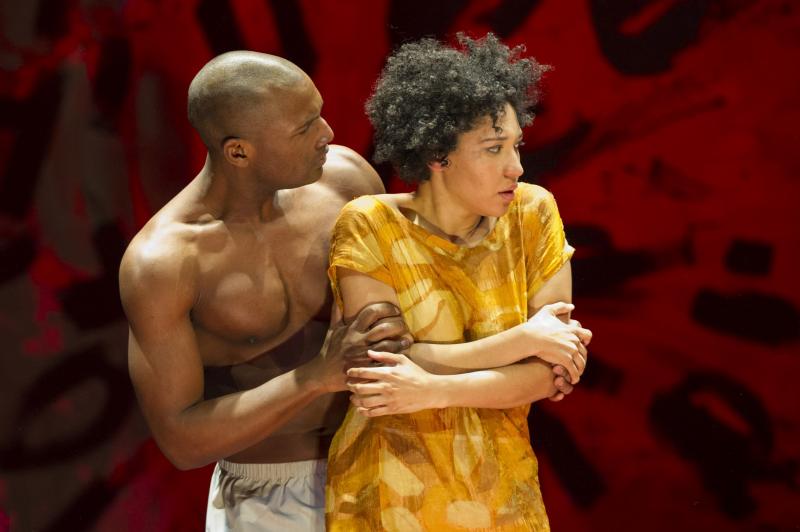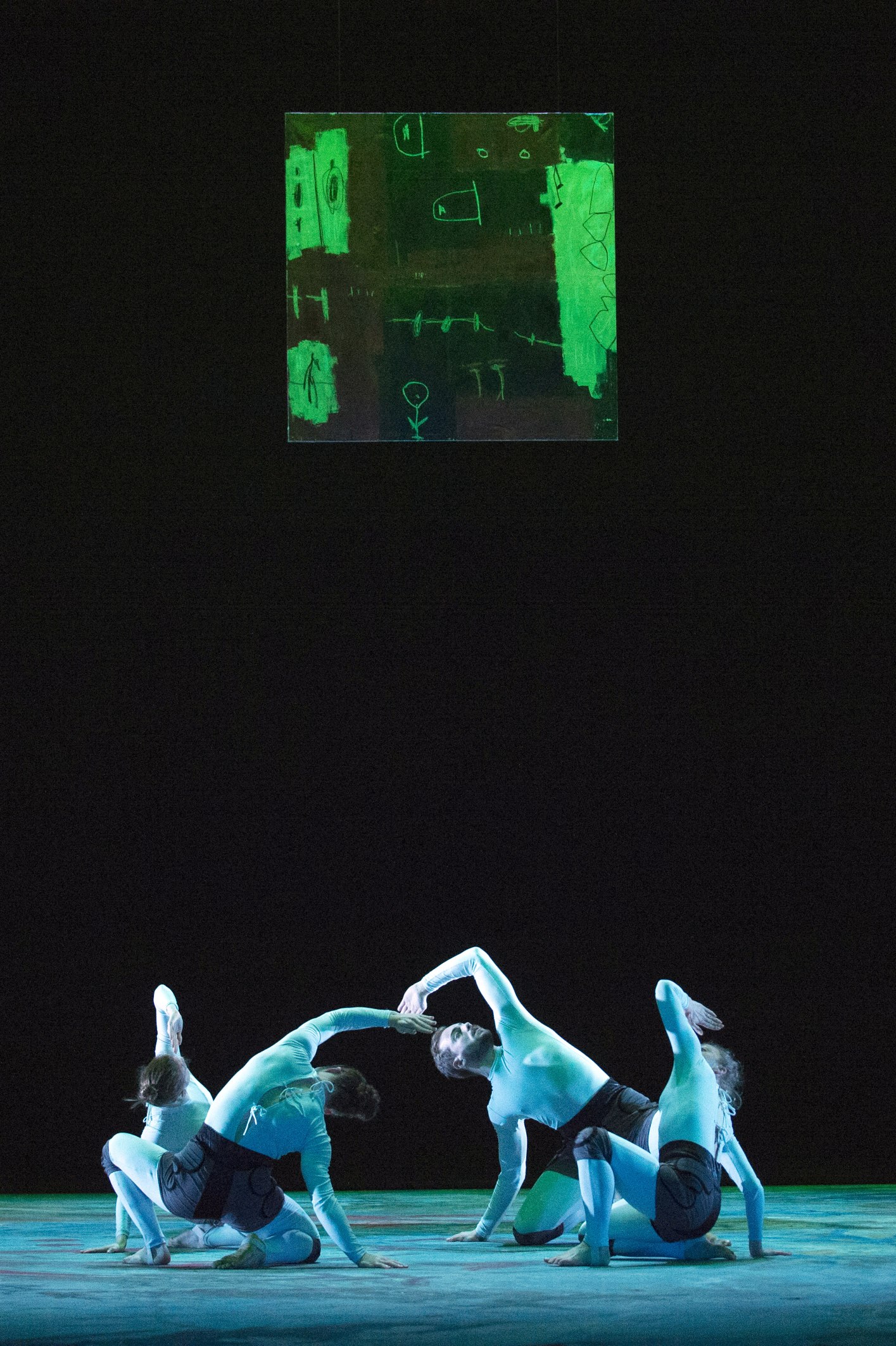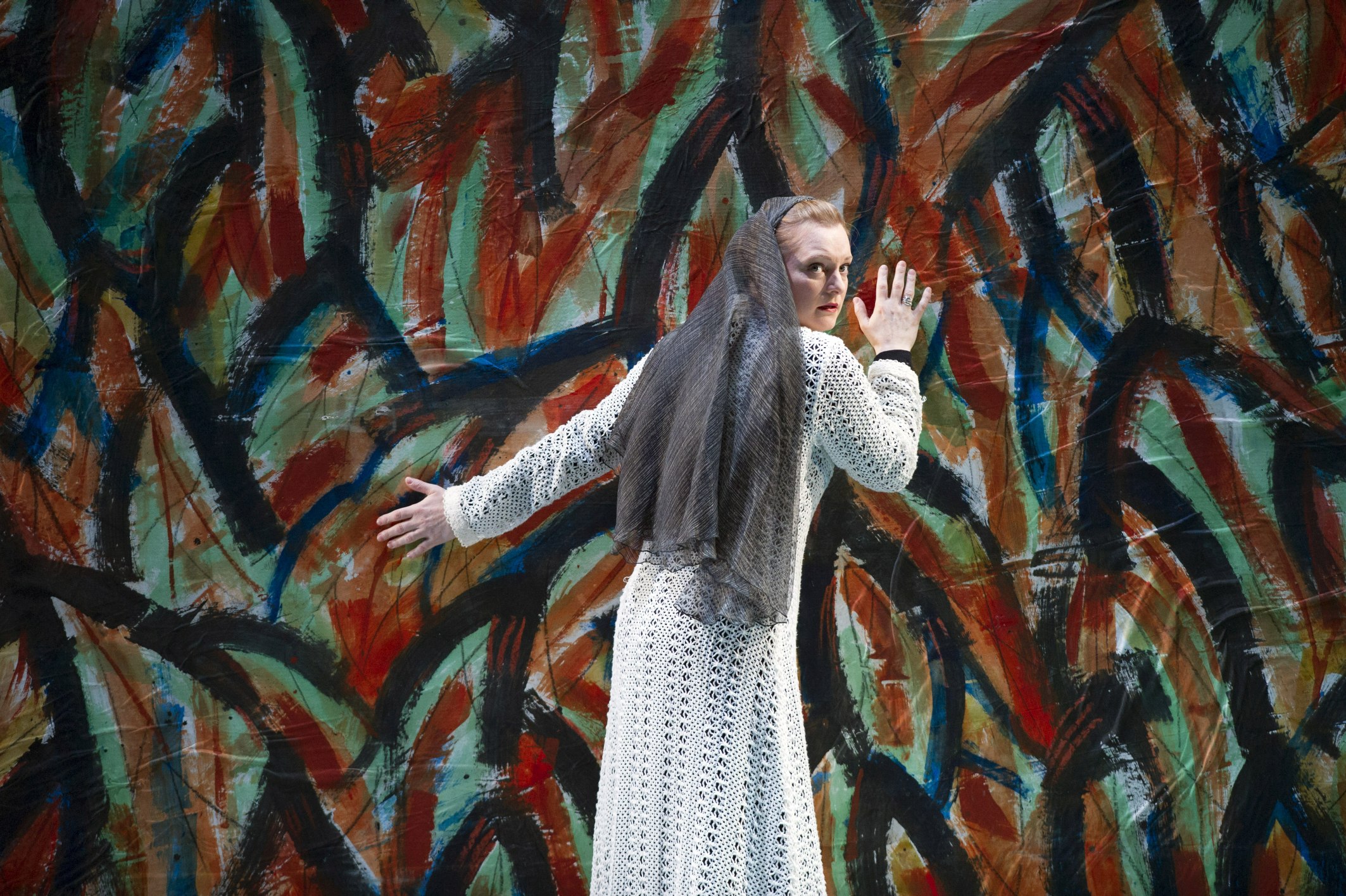The Indian Queen, English National Opera | reviews, news & interviews
The Indian Queen, English National Opera
The Indian Queen, English National Opera
A colourful but eccentric production veers between beauty and incomprehensibility

When Purcell died at just 36, he left The Indian Queen unfinished, which only adds to the usual problems of staging his "semi-operas" – plays with musical interludes which don’t really accord with modern operatic tastes, despite the ravishing beauty of the music itself.
Rather than tinkering around the edges, Peter Sellars – the director best known for his long-standing partnership with John Adams – has created a new piece entirely. Its narrated plot, borrowed from Nicaraguan novelist Rosario Aguilar's The Lost Chronicles of Terra Firma, is set around a particularly savage episode in the Spanish conquistadors' treatment of the natives, and is dressed with music from the original Indian Queen, plus significant additions of unrelated anthems and songs by Purcell, some with new texts, some not, the total clocking in at over three hours. So far, so good, except it just doesn’t work – at least not as a piece of theatre.
It all starts oddly, with four dancers (pictured below) writhing silently to generic jungle sounds playing loudly from the speakers. This acoustic backdrop suddenly drops out, and the orchestra picks up a short instrumental air. Then the jungle noise cuts back in, then back to the orchestra, five alternations in total.
 Throughout, there is plenty of action on stage, especially from the four dancers who work their socks off, but it is rarely clear what relationship any of it has to the plot. The music, every note given exquisite attention by conductor Laurence Cummings and the orchestra, is too frequently undermined by the niggling question, “What’s this got to do with anything?”
Throughout, there is plenty of action on stage, especially from the four dancers who work their socks off, but it is rarely clear what relationship any of it has to the plot. The music, every note given exquisite attention by conductor Laurence Cummings and the orchestra, is too frequently undermined by the niggling question, “What’s this got to do with anything?”
Much is signposted in the surtitles, but simply labelling something "The Invasion of Human Dreams" or "Divine Mirror of the Lovers" is not a dramatic device, it’s a cop-out. More puzzlingly still, "The Apotheosis of Chief Tecum, the Massacre, and the River of Blood" is followed by Hear my prayer, O Lord. It’s a heavy burden for this very familiar anthem, and it suffers further through the rather muscular instrument of the ENO chorus, which obscures the delicate strands of unfolding polyphony with misplaced operatic gusto.
Indeed the chorus, normally a highlight of any ENO production, is subjected to various indignities, including acting out the polyphonic entries of Blow up the trumpet in Sion with trumpety gestures, looking like a community choir playing a warm-up game.
 There is, however, much to enjoy in the individual performances of a strong cast, including a pair of superb counter-tenors, Anthony Roth Costanzo and Vince Yi, whose contrasting timbres complement each other beautifully. The two tenors, Noah Stewart and Thomas Walker, are excellent though underused, while baritone Luthando Qave adds a rich anchor to the otherwise top-heavy palette. Julia Bullock as Teculihuatzin is the main focal point and handles it well, with a particularly memorable I attempt from Love’s sickness. Lucy Crowe (pictured above) as Doña Isabel has an obvious affinity for Purcell’s music and provides some of the most cherishable moments of the evening.
There is, however, much to enjoy in the individual performances of a strong cast, including a pair of superb counter-tenors, Anthony Roth Costanzo and Vince Yi, whose contrasting timbres complement each other beautifully. The two tenors, Noah Stewart and Thomas Walker, are excellent though underused, while baritone Luthando Qave adds a rich anchor to the otherwise top-heavy palette. Julia Bullock as Teculihuatzin is the main focal point and handles it well, with a particularly memorable I attempt from Love’s sickness. Lucy Crowe (pictured above) as Doña Isabel has an obvious affinity for Purcell’s music and provides some of the most cherishable moments of the evening.
The sets, a collection of backdrops and large canvasses by Chicano artist Gronk, are a riot of colour and energy, and really give this production a strong personality and visual appeal.
When this Indian Queen rolled through Spain last year – it is coproduced by ENO with the Teatro Real and the Perm opera house – some booing and walkouts were attributed to its uncomfortable depiction of the conquistadors massacring the Aztecs. True as that may be, one can’t rule out the possibility that some people may have just been infuriated by the baffling nature of the production itself. That said, there were many in the ENO audience who clearly enjoyed it and heartily applauded the director as he joined the cast for curtain calls.
rating
Explore topics
Share this article
Add comment
The future of Arts Journalism
You can stop theartsdesk.com closing!
We urgently need financing to survive. Our fundraising drive has thus far raised £49,000 but we need to reach £100,000 or we will be forced to close. Please contribute here: https://gofund.me/c3f6033d
And if you can forward this information to anyone who might assist, we’d be grateful.

Subscribe to theartsdesk.com
Thank you for continuing to read our work on theartsdesk.com. For unlimited access to every article in its entirety, including our archive of more than 15,000 pieces, we're asking for £5 per month or £40 per year. We feel it's a very good deal, and hope you do too.
To take a subscription now simply click here.
And if you're looking for that extra gift for a friend or family member, why not treat them to a theartsdesk.com gift subscription?
more Opera
 The Railway Children, Glyndebourne review - right train, wrong station
Talent-loaded Mark-Anthony Turnage opera excursion heads down a mistaken track
The Railway Children, Glyndebourne review - right train, wrong station
Talent-loaded Mark-Anthony Turnage opera excursion heads down a mistaken track
 La bohème, Opera North review - still young at 32
Love and separation, ecstasy and heartbreak, in masterfully updated Puccini
La bohème, Opera North review - still young at 32
Love and separation, ecstasy and heartbreak, in masterfully updated Puccini
 Albert Herring, English National Opera review - a great comedy with depths fully realised
Britten’s delight was never made for the Coliseum, but it works on its first outing there
Albert Herring, English National Opera review - a great comedy with depths fully realised
Britten’s delight was never made for the Coliseum, but it works on its first outing there
 Carmen, English National Opera review - not quite dangerous
Hopes for Niamh O’Sullivan only partly fulfilled, though much good singing throughout
Carmen, English National Opera review - not quite dangerous
Hopes for Niamh O’Sullivan only partly fulfilled, though much good singing throughout
 Giustino, Linbury Theatre review - a stylish account of a slight opera
Gods, mortals and monsters do battle in Handel's charming drama
Giustino, Linbury Theatre review - a stylish account of a slight opera
Gods, mortals and monsters do battle in Handel's charming drama
 Susanna, Opera North review - hybrid staging of a Handel oratorio
Dance and signing complement outstanding singing in a story of virtue rewarded
Susanna, Opera North review - hybrid staging of a Handel oratorio
Dance and signing complement outstanding singing in a story of virtue rewarded
 Ariodante, Opéra Garnier, Paris review - a blast of Baroque beauty
A near-perfect night at the opera
Ariodante, Opéra Garnier, Paris review - a blast of Baroque beauty
A near-perfect night at the opera
 Cinderella/La Cenerentola, English National Opera review - the truth behind the tinsel
Appealing performances cut through hyperactive stagecraft
Cinderella/La Cenerentola, English National Opera review - the truth behind the tinsel
Appealing performances cut through hyperactive stagecraft
 Tosca, Royal Opera review - Ailyn Pérez steps in as the most vivid of divas
Jakub Hrůša’s multicoloured Puccini last night found a soprano to match
Tosca, Royal Opera review - Ailyn Pérez steps in as the most vivid of divas
Jakub Hrůša’s multicoloured Puccini last night found a soprano to match
 Tosca, Welsh National Opera review - a great company reduced to brilliance
The old warhorse made special by the basics
Tosca, Welsh National Opera review - a great company reduced to brilliance
The old warhorse made special by the basics
 BBC Proms: The Marriage of Figaro, Glyndebourne Festival review - merriment and menace
Strong Proms transfer for a robust and affecting show
BBC Proms: The Marriage of Figaro, Glyndebourne Festival review - merriment and menace
Strong Proms transfer for a robust and affecting show
 BBC Proms: Suor Angelica, LSO, Pappano review - earthly passion, heavenly grief
A Sister to remember blesses Puccini's convent tragedy
BBC Proms: Suor Angelica, LSO, Pappano review - earthly passion, heavenly grief
A Sister to remember blesses Puccini's convent tragedy

Comments
The ENO's Indian Queen, with
That may well be so in this
That may well be so in this case, Mr Robb (I haven't seen the production yet). but I don't think it should be taken as a sign of any total failure on the often inspirational Sellars' part. Most of us were praising him for the beauty and restraint of The Gospel According to the Other Mary only a few months back, and he has only failed Adams once, as the composer admits, in the overload of El Nino. Few, I think, doubted the intensity of feeling in his Glyndebourne Theodora.
But yes, the hybrid nature of this piece did make me fear the worst here. His staging of Mozart's Zaide put a burden on the work it couldn't sustain, and his unintelligible Merchant of Venice made for a leaden evening in the theatre. You never know what you're going to get next.
It's also a shame that so much pressure was put on him in the light of the ENO's current crisis (certainly not artistic). No doubt it had nothing to do with the writer that an Independent interview was titled 'Can Peter Sellars save ENO?' ENO is still saving itself with probably the best Wagner Mastersingers you're likely to see, and - I repeat myself - has had a good year and two months production-wise. No doubt the more fickle members of the press will use this as a stick with which to beat the company again.